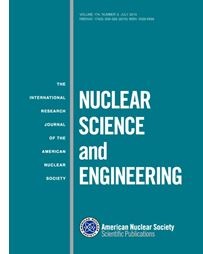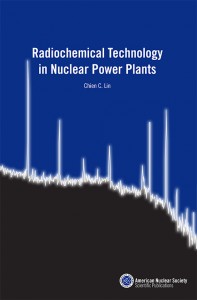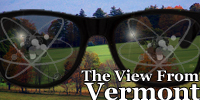Carnival of Nuclear Energy Bloggers 173
 The 173rd Carnival of Nuclear Bloggers is up right now in the Fukushima Commentary section of Leslie Corrice's site "The Hiroshima Syndrome." You can click here to access this latest edition.
The 173rd Carnival of Nuclear Bloggers is up right now in the Fukushima Commentary section of Leslie Corrice's site "The Hiroshima Syndrome." You can click here to access this latest edition.
-3 2x1.jpg)
A message from Curtiss-Wright
High-Temperature neutron flux detectors for Generation IV reactors and SMRs
 The 173rd Carnival of Nuclear Bloggers is up right now in the Fukushima Commentary section of Leslie Corrice's site "The Hiroshima Syndrome." You can click here to access this latest edition.
The 173rd Carnival of Nuclear Bloggers is up right now in the Fukushima Commentary section of Leslie Corrice's site "The Hiroshima Syndrome." You can click here to access this latest edition.
At the birthplace of nuclear energy, one man dares to answer all questions nuclear - Dr. Dave Grabaskas of Argonne National Laboratory.
I had an interesting conversation with some colleagues last night. We were talking about our jobs, and it turned out that some of them were considering moving on to new prospects outside of the nuclear industry. After digging in to the reasons why, the sentiment seemed to come down to "It feels like we're running as hard as we can only to gain inches every day."
 The September 2013 edition of the research journal Nuclear Science and Engineering is available both electronically and in hard copy for American Nuclear Society member subscribers and others.
The September 2013 edition of the research journal Nuclear Science and Engineering is available both electronically and in hard copy for American Nuclear Society member subscribers and others.
In May 2013, the United States lost a perfectly functional and well-maintained nuclear power plant, the Kewaunee Nuclear Power Plant. Last week, Entergy announced that it would be shutting down a second such plant, Vermont Yankee, after its current fuel load has been consumed. In both cases, the owners indicated that the plants were no longer economical due to market conditions; namely, the low price of natural gas, the presence of subsidized renewable energy suppliers that can pay the grid to take their power and still receive revenue for every kilowatt-hour generated, and an insufficient market demand for electricity in the markets where the plants were attempting to sell their output.
 The 172nd Carnival of Nuclear Energy has been posted at Yes Vermont Yankee. You can click here to access this latest edition of a long-running tradition among pro-nuclear bloggers.
The 172nd Carnival of Nuclear Energy has been posted at Yes Vermont Yankee. You can click here to access this latest edition of a long-running tradition among pro-nuclear bloggers.
For faithful viewers of the ANS Nuclear Matinee-an instant classic from not so long ago, starring Microsoft founder, philanthropist, and nuclear energy enthusiast (and investor) Bill Gates.
 The American Nuclear Society has published a new book, "Radiochemical Technology in Nuclear Power Plants" by Chien C. Lin, available in hard cover through the ANS store.
The American Nuclear Society has published a new book, "Radiochemical Technology in Nuclear Power Plants" by Chien C. Lin, available in hard cover through the ANS store.
"Vermont Yankee Nuclear Power Station generates 72.5 percent of the state's electricity while emitting no greenhouse gases."
 The 171st Carnival of Nuclear Energy is up right now at Atomic Power Review. You can click here to access this latest edition of a long running tradition among pro-nuclear bloggers.
The 171st Carnival of Nuclear Energy is up right now at Atomic Power Review. You can click here to access this latest edition of a long running tradition among pro-nuclear bloggers.
Developments this week at the Fukushima Daiichi nuclear station have been relatively few-but they've made headlines.
We don't really know how much trouble we are in with global warming, but if it continues, experts tell us to expect flooding in coastal areas, intense storms, droughts, regional food and water shortages, mass migrations, and social upheaval. There is probably a tipping point, the point at which anthropogenic global warming becomes irreversible, so there is an urgency to developing safe, clean, cheap energy. Scientists and engineers are in a race to find a solution.
An unusual number of unusually ill-founded nuclear headlines appeared in the mainstream media last week. Among the more prominent:
 ANS Nuclear Cafe is proud to host the 170th edition of the Carnival of Nuclear Energy - a rotating feature that showcases the best pro-nuclear blogs and authors each week in a single, easy to access compilation. Contributions are volunteered by the authors, with the exception of "Captain's Choice" picks that the Carnival host makes from time to time. With that, let's get to this week's posts!
ANS Nuclear Cafe is proud to host the 170th edition of the Carnival of Nuclear Energy - a rotating feature that showcases the best pro-nuclear blogs and authors each week in a single, easy to access compilation. Contributions are volunteered by the authors, with the exception of "Captain's Choice" picks that the Carnival host makes from time to time. With that, let's get to this week's posts!
This week, the Fukushima Daiichi nuclear station's long history was further appended by the approval of decommissioning plans for the site by Japan's nuclear regulator, the Nuclear Regulation Authority (NRA). This approval both clearly sets guidelines for safety at the site, and puts the government stamp of approval on Tokyo Electric Power Company's highly complicated timeline for the complete decommissioning and removal of Units 1 through 4 at the site. This announcement follows closely the order by Prime Minister Abe to increase government oversight of cleanup efforts on site. What remains to be seen is whether or not the Japanese public has any more faith in their government regarding decommissioning of the site than it has with TEPCO, which by all accounts in the Japanese press is no longer considered trustworthy.
Shortly after the Obama administration unlawfully terminated the Yucca Mountain Project, three Washington State citizens (Robert L. Ferguson [the author], Bill Lampson, and Gary Petersen) filed suit to hold the President and his administration accountable to the law. Similar suits filed by Aiken County, South Carolina, and the states of Washington and South Carolina; the National Association of Regulatory Utility Commissioners; and Nye County, Nevada, were combined into one lawsuit.
Get to Know Nuclear
 Energy-related events in Vermont continue to be a jumble of citizen activism, political maneuvering, changes to the electric power system, and an overall focus on nuclear power.
Energy-related events in Vermont continue to be a jumble of citizen activism, political maneuvering, changes to the electric power system, and an overall focus on nuclear power.
 The 169th Carnival of Nuclear Energy posted over the weekend at Next Big Future. Click here to see the latest edition of this time-honored tradition among the best pro-nuclear English-language bloggers.
The 169th Carnival of Nuclear Energy posted over the weekend at Next Big Future. Click here to see the latest edition of this time-honored tradition among the best pro-nuclear English-language bloggers.
James Hansen, former head of the NASA Goddard Institute for Space Studies, earlier this year co-authored a study that conservatively estimated that nuclear power has saved 1.8 million lives since 1971 that otherwise would have been lost due to fossil fuel pollution and associated causes. For more information, see this post at Scientific American blogs-and this previous ANS nuclear matinée.